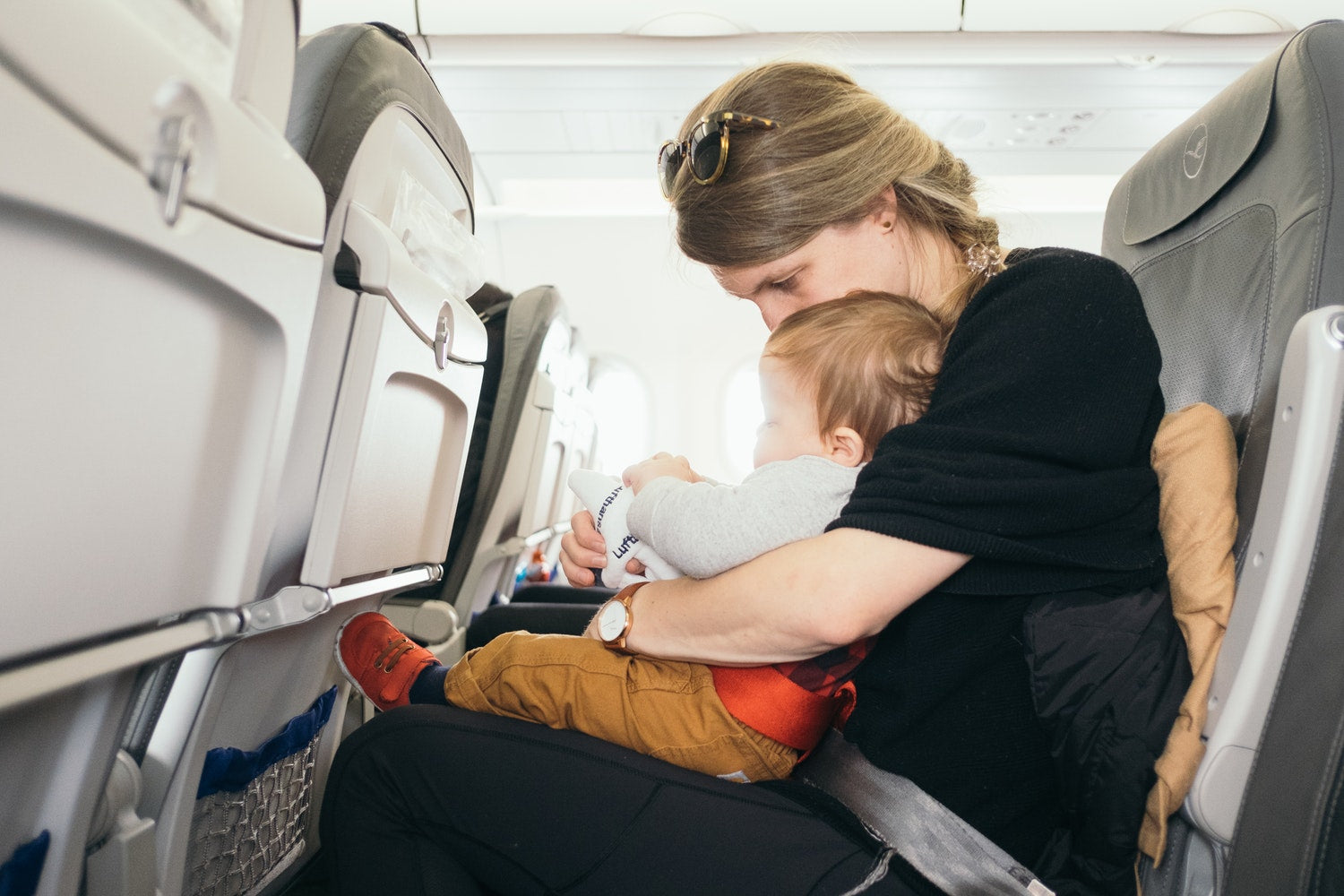Air travel with kids and infants requires some extra preparation. Here are some key things you need to know to ensure a smooth trip for everyone.
# Booking flights and getting tickets
When booking flights, you’ll need to purchase tickets for all children, including infants. Ticket types and pricing vary depending on a child’s age: Infants ages 0-2: Infant tickets are typically only required to cover any airport fees and taxes. Infants will sit on the lap of their guardian and do not require their own seat. Children ages 2-12: Child tickets must be purchased and these passengers will be assigned their own seat on the flight. Ticket pricing is usually a percentage of the adult fare. Passengers over 12: Anyone over the age of 12 is considered an adult by airlines and a full-price adult ticket must be purchased. Be sure to book flights and purchase all required tickets well in advance, as ticket prices tend to increase as the travel date approaches. Inform the airline during booking if you’ll need any special arrangements like bassinet or car seat installations.

# Check-in process and documents
When checking in for your flight, you’ll need identification for adult passengers and proof of age for child passengers, like birth certificates or passports. The airline may also request the child’s documents during security screening. Be prepared to check any baby items like strollers, car seats, or bassinets. Most major carriers accept one checked baby item per infant free of charge. Gates typically open 1-2 hours before departure so plan accordingly with kids.
# Onboard the flight
Communication is key when traveling with children. Let flight attendants know about any needs upfront, like requests for blankets, children’s meals, entertainment, or assistance with restless kids. Most airlines provide kid-friendly entertainment and activity kits. For safety, all passengers including infants and children should remain buckled and seated during takeoff, landing, and turbulence. Consider bringing favorite toys, books, and snacks to keep kids occupied at their seats.
# Arriving at your destination
Once you land, stop by the airline desk near baggage claim if any baby items were checked. They can direct you to the oversized baggage area for strollers, car seats, etc. Take time to stretch legs before jumping in vehicles or public transport after the long flight. Proper preparation, communicating needs and expectations, and engaging activities can help ensure a smooth air travel experience when traveling with infants and children. Let me know if any other questions come up!
Airport technology making travel easier for families
Airports around the world are innovating to improve the experience for families traveling with young kids. Here are some of the technologies making a difference.
# Facial recognition check-in
Several US airports now offer facial recognition options to expedite the check-in process. This allows families to bypass regular check-in desks which can save valuable time. All passengers just need to verify identities at a kiosk using photos on file.
# Biometric boarding
International airports in Europe and Asia have also launched biometric boarding programs where passengers can scan fingerprints or iris at gates for identity verification. This streamlines boarding for families while skipping the document check line.
# Mobile applications
Many airport apps provide real-time parking, terminal, gate and flight information to help travelers easily navigate airports. Features like interactive maps and push notifications for flight status updates help frazzled families stay on track.
# Automated bag drop
Self-service bag drop kiosks allow passengers to print bag tags, weigh and check luggage without interaction. This removes queues and wait times that kids often struggle with. Several US pre-check programs also provide expedited security screening.
# Child-centric lounges
Family lounges and play areas stocked with toys, books, nursing stations and food aim to keep children entertained during layovers. Airport designers focus on creating calming, kid-friendly spaces to maintain little traveler’s patience and energy levels. By integrating cutting-edge identification and wayfinding solutions, airports improve convenience significantly for families traveling with young kids. The goal is a seamless journey from parking to boarding gates.
Preparing for air travel with infants
Making sure baby is comfortable is a top priority when flying with an infant. Here are some essential items to pack: Car seat: Bring baby’s federally-approved car seat for takeoff/landing and transporting them through the airport. Most airlines allow car seats to be used on board. Diaper bag: Pack more diapers than you think you’ll need along with wipes, diaper rash cream and changes of clothes. Don’t forget any medications or creams. Baby food and snacks: Bring milk, formula, cereal, purees and finger foods as airport food may not suit little ones. Freeze bottles or breastmilk ahead of time to keep cold longer without ice. Entertainment: Download movies, music or ebooks onto devices before the flight. Pack developmental toys, books, stacking cups and cards that require little noise. Blankets and swaddles: Use swaddles during takeoff/landing for security. Extra blankets can provide comfort and cushion. Make sure everything packs compactly. Nursing cover: A cover allows feeding discretion without interruption. Let flight attendants know if you need frequent access for your little one. Pacifiers and soothing items: Pacifiers provide sucking for comfort. Other items like a lovie or stuffed animal provide emotional security through touch. Changing pad: Bring a changing pad or thick diaper for changing on any surface. Most airlines provide changing tables in restrooms. With tender care and planning, young infants can adjust well to flying. Communication and preparation help guarantee a smooth trip from start to finish.
Planning meals and feeding on flights
Feeding an infant or toddler on a plane requires some advance preparation and flexibility. Here are tips for managing mealtimes:
Pack extra food: Bring breastmilk, formula, baby food purees, pouches and toddler snacks—50% more than you think you’ll need to account for delays. Freeze bottles/pouches and use chilled lunchbox packs to keep food cool.
Schedule feedings: Try nursing, bottle or solid feeding takeoff/landing when babies may have ear pressure issues. Also feed before boarding and after taxi/waiting at the gate to reduce interruptions.
Watch meal schedules: Familiarize yourself with airline meal times and, if possible, book flights during typical nap or non-meal times to avoid distractions.
Request special meals: For international flights, book any special baby meal requests like pureed/mashed foods when you buy tickets. Most airlines provide these with standard toddler/child meals on domestic routes at no charge.
Bring cups and utensils: Pack weighted or non-spill cups for water along with toddler utensils if your child self-feeds finger foods/purees independently.
Layer clothes: Dress baby in clothing that’s easy for nursing/bottle feeding access like sleepers with buttons/zips. Bring a bib too.
Be prepared: Staying organized with insulated bags/lunchboxes and making plans helps you keep little ones fed despite disruptions during flights.
Proper supplies and attentiveness make snack and mealtime hiccups easy to manage at cruising altitude. Keep baby and family fueled for a smooth journey.

 Your One Week Sydney & Surrounding Areas Travel Guide
Your One Week Sydney & Surrounding Areas Travel Guide